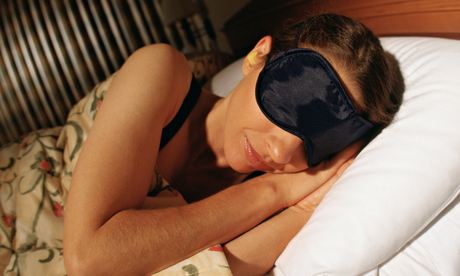
Scientists have discovered that it is possible to induce lucid dreaming in sleepers by applying mild electrical currents to their scalps, a study says.
Lucid dreaming is when a sleeper recognises they are dreaming and may even be able to manipulate the dream's plot and control their behaviour.
"The key finding is that you can, surprisingly, by scalp stimulation, influence the brain. And you can influence the brain in such a way that a sleeper, a dreamer, becomes aware that he is dreaming," said Professor J Allan Hobson, from Harvard Medical School, who co-authored the paper published in Nature Neuroscience.
Previous research, led by Dr Ursula Voss of Johann Wolfgang Goethe-University in Germany, suggests lucid dreaming is a unique state that displays aspects of both REM-sleep – the stage of sleep in which most of our dreams occur – and waking. By examining the sleepers' brainwaves over a range of frequencies, scientists have found that lucid dreamers demonstrate a shift towards a more "awake-like" state in the frontal and temporal parts of the brain, with the peak in increased activity occurring around 40Hz.
"Lucid dreaming is a very good tool to observe what happens in the brain and what is causally necessary for secondary consciousness," Voss said.
Now Voss and her team have reported that it is possible to induce lucid dreaming by delivering electrical stimulation, in the form of an alternating current to a sleeper's scalp at this frequency.
The study involved 27 volunteers, none of whom had experienced lucid dreaming before. The researchers waited until the volunteers were experiencing uninterrupted REM sleep before applying electrical stimulation to the frontal and temporal positions of the volunteers' scalps.
The applied stimulation had a variety of frequencies between two and 100Hz, but neither the experimenter nor the volunteer was informed which frequency was used, or whether a current was applied. Five to 10 seconds later the volunteers were roused from their sleep and asked to report on their dreams. Brain activity was monitored continuously throughout the experiment.
The results showed that stimulation at 40Hz resulted in an increase in brain activity of around the same frequency in the frontal and temporal areas. A similar, but smaller effect was observed at 25Hz. They also found that such stimulation often, but not always, induced an increased level of lucidity in the dreams of sleepers. At higher or lower frequencies, or when no current was applied, no change in brain activity was observed.
Hobson said the study could have implications in psychiatric research. "As a model for mental illness, understanding lucid dreaming is absolutely crucial. "I would be cautious about interpreting the results as of direct relevance to the treatment of medical illnesses, but [it's] certainly a step in the direction of understanding how the brain manages to hallucinate and be deluded."
The authors suggest triggering lucid dreaming in sleepers might enable them to control nightmares, for example in those suffering with post-traumatic stress disorder.

